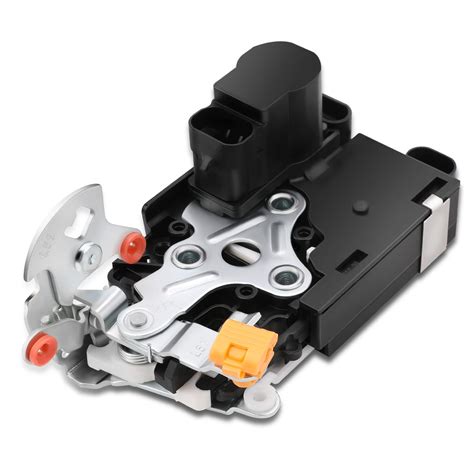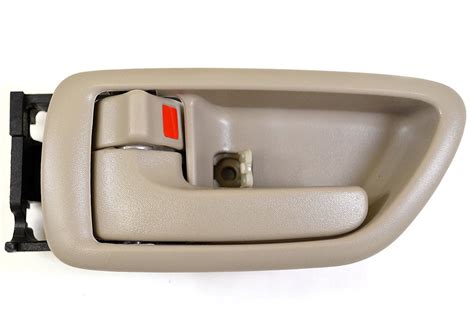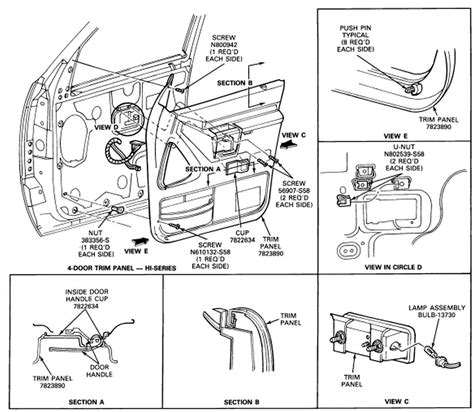Door Driver

In the world of technology, innovation is often driven by the need for efficiency and convenience. One such innovation that has gained prominence in recent years is the door driver, a sophisticated mechanism designed to revolutionize the way we interact with doors and automate their functionality. This article delves into the intricacies of door drivers, exploring their history, applications, and the significant impact they have on various industries.
Understanding Door Drivers

A door driver, often referred to as an automatic door operator or door actuator, is a power-assisted device engineered to open and close doors automatically. It serves as the driving force behind the seamless operation of doors, ensuring accessibility and ease of use. These devices have evolved from simple mechanisms to highly advanced systems, incorporating cutting-edge technology and precise engineering.
The concept of automated doors dates back to the early 20th century, with the first automatic door systems being developed for commercial and industrial applications. Over the years, advancements in technology and a growing emphasis on accessibility have led to the widespread adoption of door drivers across various sectors.
Key Components and Working Principle
Door drivers consist of several key components, including an electric motor, gears, sensors, and control systems. The motor provides the power to open and close the door, while the gears ensure smooth and controlled movement. Sensors detect the presence of objects or individuals, triggering the door’s operation, and the control system manages the entire process, ensuring safety and efficiency.
The working principle of a door driver involves converting electrical energy into mechanical motion. When activated, the motor engages the gears, which in turn move the door along its path. Advanced door drivers often incorporate microcontrollers and sophisticated algorithms to optimize door operation, taking into account factors like speed, acceleration, and potential obstacles.
| Component | Function |
|---|---|
| Electric Motor | Provides power for door movement. |
| Gears | Ensure smooth and controlled door operation. |
| Sensors | Detect objects and individuals, triggering door activation. |
| Control System | Manages door operation, ensuring safety and efficiency. |

Applications and Benefits

Door drivers have found applications in a wide range of industries, each benefiting from their unique advantages.
Commercial and Retail Spaces
In commercial settings, door drivers enhance customer experience and accessibility. Automatic doors in retail stores, malls, and restaurants provide easy entry and exit, accommodating a wide range of users, including those with mobility challenges. The seamless operation of these doors contributes to a welcoming and inclusive environment, improving overall customer satisfaction.
Additionally, door drivers offer energy efficiency benefits. By integrating sensors and intelligent controls, these systems can detect when a door is not in use and automatically adjust its operation, reducing unnecessary energy consumption.
Healthcare and Assisted Living Facilities
Door drivers play a crucial role in healthcare settings, where accessibility and infection control are paramount. Automatic doors in hospitals, clinics, and assisted living facilities promote hygiene by minimizing physical contact with door handles, reducing the risk of pathogen transmission. They also ensure easy access for patients, visitors, and staff, especially those with limited mobility.
Furthermore, door drivers in healthcare facilities can be integrated with patient monitoring systems, allowing for remote control and automatic door operation based on patient needs and movement patterns.
Industrial and Manufacturing Environments
The precision and reliability of door drivers make them invaluable in industrial and manufacturing contexts. These systems ensure safe and efficient access to facilities, especially in areas with heavy machinery or hazardous materials. Door drivers can be programmed to operate at specific times or in response to certain conditions, enhancing workplace safety and productivity.
In addition, door drivers in industrial settings can be integrated with security systems, providing controlled access and monitoring for unauthorized entry.
Performance and Reliability
The performance and reliability of door drivers are critical to their success in various applications. Modern door drivers are designed with durability and longevity in mind, utilizing high-quality components and advanced manufacturing techniques.
Key Performance Metrics
Several key performance metrics are used to evaluate the effectiveness of door drivers:
- Cycle Testing: Door drivers are subjected to rigorous cycle testing to ensure they can withstand heavy use. Modern door drivers are capable of millions of cycles, ensuring long-term reliability.
- Speed and Acceleration: The speed at which a door opens and closes, as well as its acceleration, are critical factors. Advanced door drivers offer precise control over these parameters, ensuring smooth and efficient operation.
- Energy Efficiency: Door drivers with energy-efficient motors and control systems help reduce overall energy consumption, contributing to cost savings and environmental sustainability.
- Safety Features: Modern door drivers incorporate advanced safety features, such as obstacle detection and emergency stop mechanisms, to prevent accidents and ensure user safety.
Reliability and Maintenance
To maintain optimal performance, door drivers require regular maintenance. This includes routine inspections, lubrication, and component replacements as needed. Many modern door drivers are designed with modular components, making maintenance and repairs more accessible and cost-effective.
Future Trends and Innovations
The door driver industry is continually evolving, driven by technological advancements and changing market demands. Here are some key trends and innovations shaping the future of door drivers:
Smart and Connected Systems
The integration of door drivers with smart building technologies and the Internet of Things (IoT) is a growing trend. These systems enable remote monitoring and control, allowing facility managers to optimize door operation based on real-time data and user feedback.
Energy-Efficient Solutions
With a growing emphasis on sustainability, door driver manufacturers are developing more energy-efficient solutions. This includes the use of advanced motor technologies, improved control systems, and energy-harvesting mechanisms to reduce overall energy consumption.
Enhanced Safety Features
Safety remains a top priority in the door driver industry. Future innovations will focus on further enhancing safety features, such as advanced obstacle detection, improved emergency stop mechanisms, and integration with access control systems for secure and controlled access.
Customizable and Aesthetic Designs
Door drivers are increasingly being designed with aesthetics in mind, offering customizable options to blend seamlessly with their surroundings. This includes a range of finishes, colors, and architectural styles to meet the unique needs of different environments.
Conclusion

Door drivers have transformed the way we interact with doors, offering enhanced accessibility, convenience, and safety. Their widespread adoption across industries demonstrates the importance of automated door systems in modern society. As technology continues to advance, we can expect door drivers to become even more intelligent, efficient, and integrated into our daily lives.
How do door drivers enhance accessibility for individuals with disabilities?
+Door drivers, by offering automatic operation, provide easy access for individuals with mobility challenges, including those using wheelchairs or mobility aids. These systems ensure that doors can be opened and closed effortlessly, promoting independence and inclusivity.
What safety features do modern door drivers incorporate?
+Modern door drivers are equipped with advanced safety features such as obstacle detection, emergency stop mechanisms, and sensors that detect the presence of objects or individuals in the door’s path. These features help prevent accidents and ensure a safe environment.
How do door drivers contribute to energy efficiency in buildings?
+Door drivers with intelligent control systems can optimize door operation, reducing unnecessary energy consumption. By automatically adjusting door operation based on usage patterns and environmental conditions, these systems help conserve energy and reduce operational costs.



